
Candida Martinelli's Italophile Site

Main
Page This family-friendly site celebrates Italian culture for the enjoyment of children and
adults. Site-Overview
Wallace Breem's Eagle in the Snow is
widely recognized as a modern classic in the historical fiction
genre, creating living characters, set in a factually correct
past, that is brought to life through the skill of the writer. He
has inspired historical novelists since this novel first came out in
1970. You'll find many elements of his novels and characters
in the books by Lindsay Davis (Marcus Didius Falco Mystery Series) and Steven Saylor (Gordianus the Finder
Mystery series). And the Italian novelist Valerio Massimo
Manfredi's book The Last Legion, which was made into a film
of the same name, takes up the Excalibur plotline that is suggested
by a line near the end of Eagle in the Snow. Eagle in the Snow was recently re-released in both hardback and
paperback (although it is still hard to come by).
And there are plenty of
second-hand copies in circulation.
There is, again, talk
of adapting it to film. Interest in the book was
renewed partly because the character of Maximus, Quintus and others
that appeared in the Oscar-winning film Gladiator, were
inspired at least in part by Mr. Breem’s characters.
And the opening sequence of the film, on the Eastern border of
the Roman Empire, was straight from Mr. Breem’s book. Many Eagle in the Snow
fans regret that Gladiator only took a few characters and
settings, rather than adapted the whole novel.
They all agree that Breem’s story is far superior to the Gladiator
story, which is mainly a mash-up of old Hollywood Roman-Swords-and-Sandals movies. Wallace Breem's book covers
most of the life of Maximus, a fictional Roman General,
who recounts his story to some defeated peasants in Cornwall,
England. As he recounts, over the course of Maximus's career,
he
defends the Roman Empire from invasion by hordes from the North, and
then the East under Roman General Stilicho (roughly present day France from present day Germany). Maximus is a perfect Roman
soldier: brave, orderly, rigorous, dedicated, honorable and
dependable. He is a staid and stolid man whose greatest pride
is in his self-discipline and the forces under him. So he is
understandably
shamed to see the poor state of Rome's famous legions as the
Empire crumbles under the continued attacks from tribes outside the
Empire's frontiers (limes).
He puts up a thankless
struggle against a unified force of invaders both in the North and
in the East. But the winter invasions by barbarian tribes over the frozen Rhine River in 406-407,
which he attempts to counter, are often
sited as the beginning of the end of the Roman Empire, as Breem
recounts in his book through
stolid
Maximus's account. You should read the rave
reader reviews at both Amazon.com
and Barnes
and Noble. Because we know in advance the sad outcome of all
of poor Maximus's commands, I found the book rather sad and
depressing, but also full of painfully real characters set in a
meticulously imagined past that is painted with a light touch.
Maximus's stolid character produces many moments of poignancy.
I had to read the book in small doses so as not to become to
depressed by the story. One reader-reviewer wrote: "...there is a
poignant Latin coda at the end of the original text, along the lines
of a Roman funerary inscription, that is MISSING from both Rugged Land
editions (hardback and paperback) -- how do these things happen? Shame
on the publisher. This ties up some lingering questions about how
Maximus' narrative came to be and is a fitting sign-off to this
powerful story." Here is that funerary epitaph, that is an answer
to Maximus's near final statement that none of the soldiers from the
Eastern front were commemorated on funerary (grave) stones, as was a
Roman tradition, just in case your edition is
missing it: DIS MANIBUS And a rough translation (please contact me if you
have a better one): To
the spirits of the departed (To the gods of the afterlife, or in
today's wording 'In Loving Memory')
For Paulinus
Gaius Maximus son of Claudius Arelatis, Prefectus
of the First Cohort of Tungrians, and Legate of the Twentieth Legion Valeria Victrix, Commander
in Chief at Mainz, Count in charge of the defense of Gaul
who died aged 57, and for Quintus Veronius, Prefectus of
the Petriana Wing, and Prefectus of the Second Cohort Asturias, and Master
of the Horse (Head of the Cavalry) for Upper Germany, who died in his 56th year
in the Battle of the Rhine.
Their
friend Saturninus erected this. The womanizing, drinking, gambling,
master-horseman character of Quintus Veronius, one of Maximus's
closest friends, appears to be a precursor of the protagonist of
Breem's next novel, The Legate's Daughter, Curtius Rufus, who
may be based on the Roman senator, historian and self-made man of
obscure background, Quintus Curtius Rufus. If you're into battle scenarios and war-games,
check out this fan's
analysis of Maximus's battles to defend the Roman Empire's Eastern
flank. "Banished to the Empire’s farthest outpost, veteran warrior
Paulinus Maximus defends The Wall of Britannia from the constant
onslaught of belligerent barbarian tribes. Bravery, loyalty,
experience, and success lead to Maximus’ appointment as
"General of the West" by the Roman emperor, the ambition of
a lifetime. But with the title comes a caveat: Maximus needs to
muster and command a single legion to defend the perilous Rhine
frontier.
I have read this book (C.M.)
and I found it an intriguing read. The author departs from his
first book (Eagle in the Snow) which shows in intimate detail the
skills and character needed to head an Ancient Roman legion at the
border of the Empire. Instead, The Legate's Daughter shows
in intimate detail the skills and characters needed to run a
diplomatic mission at the edge of the Ancient Roman Empire. The reader is put in the position of a diplomat, someone who must
collect gossip, read people, and read between the lines
in this third-person narrated novel. Nothing
is spelled out for the reader. We must move along with the
characters and try to cipher out the truth, the good guys and the bad
guys from the events, glances, words, sighs, and chance encounters. The protagonist is Curtius Rufus. He is spotted by Maecenas, a
real-life master diplomat, and by Marcus Agrippa, a real-life soldier
and administrator, who has had to rely on Maecenas's diplomatic skills
more then once. The two men tutor Curtius, then send him on a
delicate and impossible mission: to recover the daughter of a
Roman patrician and senator, who has been taken by force from Spain and
who is likely hidden somewhere in North Africa. Breen has created in Curtius Rufus a whole character, full of
contradictions, talents, weaknesses and all the natural skills needed by
a diplomat who has to deal with the tribes at the edge of the Roman
Empire: guile, intuition, sharp reasoning, people reading,
languages, gossip mongering, seduction, conversation that convinces and
that induces confidence, patience, tactical tricks, leadership,
sacrifice, friendship, loyalty. Curtius is a man in a man's world, but he also understands
those at the weak end of the harsh society: the slaves (his father
was one), the freedmen (he is one), the Roman outsiders (his best friend
is one), the women (his greatest skill is his ability to seduce and
please women). It is possible that Breem created his character with the
historian/politician Quintus Curtius Rufus, sometimes called Curtius
Rufus, in mind. The Roman writer Tacitus tells us what little
we know about Rufus, and it fits very closely with Breem's
character, in moody temperament and ambitious new-man status, which
was a self-made man from obscure birth. That would mean that
Breem's Rufus goes on after the end of the book to have a very long
life and career leading to a Praetorship, a Consulship, a Triumph
(not for military triumphs but for commercial ones), and as a
writer, and lastly as Proconsul of Africa, where he presumably died,
a very old man. The book is rich with period detail, so rich that it seems to be
written by someone who lived through the events described. No, I
mean REALLY lived there. So many historical novels purport to be
first person accounts of events and fall short, but we make excuses for
the writer, saying "Well, it is set in in a date from before the birth
of Christ...". This book has the richness that leaves you feeling
that you have visited the times and places described.
This is not an easy read. Many times I had to set the book down
and head for the Internet to look up the history, geography and people
of Ancient Rome. I'm not complaining. I enjoyed that.
But a warning to readers who like everything handed to them on a
plate: to read the book without the historical information would
be a waste of time. Breem's first novel was written as a gift to
his wife. This novel reads like a gift to every classicist on the
planet. There is so much for the knowledgeable reading to enjoy.
This means that you, the reader, must assemble the plot in your mind as
you read, as if you were decoding a diplomatic message.
Challenging, yes. Rewarding, most definitely yes! It is
the kind of book that you read to the last page then you start all over
again at page one, to make sure you've really understood everything that
happened. I read it, did lots of research, then read it again, and
I enjoyed it even more the second time around! (This profile was published previously in Solander,
the the magazine of the Historical Novel Society, and is authored by
Mr. Alan Fisk (see below).) In
1970, the Times Literary Supplement ran a dismissive
review of a new historical novel called Eagle in the Snow, by
an unknown writer called Wallace Breem. The
review was read by no less a personage than Mary Renault, who sent a
scathing letter to the TLS, praising the book and lambasting
the reviewer. Eagle in the Snow became a major success,
being reprinted twice within the same year, and Wallace Breem seemed
set to become one of the big names in historical fiction. In
July 2002 Eagle in the Snow will be reissued by Phoenix Press.
(A full review of Eagle in the Snow will appear in a future
issue of The Historical Novels Review.) Negotiations are in
progress for a possible film. Sadly, Wallace Breem himself cannot
enjoy this success, having died in 1990, but his widow Mrs. Rikki
Breem kindly granted an interview to Solander to help with this
article. The
interest in the novel and a film partly arise because the Roman
general Maximus, the hero of Eagle
in the Snow was an inspiration for the Roman general Maximus,
the hero of the film Gladiator. Eagle
in the Snow covers a period of over 30 years, starting in
late fourth-century Britain, and finishing in a harrowing climax when
the freezing-over of the river Rhine on 31 December 406 allows a vast
horde of Germanic barbarians to pour into the western provinces of the
Empire. Maximus is a loyal officer and husband, and a devotee of the
cult of Mithras, but his steadfastness is not repaid by loyalty on the
part of those close to him. This Maximus is no tiger-fighting
gladiator, but a passionate and unhappy man driven into deep waters
against his will. Breem
achieved his ambition, and was commissioned into the Queen
Victoria’s Own Corps of Guides, a very distinguished regiment
that had long served on the Northwest Frontier. He
looked forward to a lifelong career in the Guides, apparently not
foreseeing that there would be no place for men like him in the
independent India that was soon to come into being. His years in the
Guides would always haunt him. Upon
Partition in 1947, Wallace Breem left the Army and sailed back to
England, with no plan at all for his life. He had so wanted to make a
career in the Guides. On
the voyage home, Breem began writing the novel that would one day
appear after many revisions as his third novel, The Leopard and the
Cliff, of which more later. When
he arrived home Breem took a series of short-term casual jobs, not
really knowing what to do with himself. He worked as an assistant to a
veterinary surgeon, spent some time working in a tannery, and for a
while he was a rent collector in the East End of London, a job which
was perhaps nearly as dangerous as his combat service on the Northwest
Frontier. Eventually
an acquaintance suggested that he join the staff of the Inner
Temple legal library. Breem had no training or experience in legal
librarianship. Today nobody would get such a job without a handful of
appropriate certificates, but in the 1940s character counted for more
than paper qualifications. Wallace Breem settled into the Inner Temple
library, where he would work for the rest of his life. There
was much to do. A large part of the Inner Temple’s 500-year-old
collection had been lost to enemy air raids in 1941/2, because of a
stubborn decision not to move it out of London. Breem started as an
Assistant, and then became a Sub-Librarian in 1956. While
he spent his working life in the library, Wallace Breem had never lost
his interest in writing and in history. He had kept the manuscript of The
Leopard and the Cliff, and planned several other novels. As
he rose through the ranks of the Inner Temple library, Breem was also
busy writing. Over the years he experienced frustration as a
succession of promising schemes came to nothing. At one stage a
publisher had asked him to write a book for children, but it was
cancelled. In
1965 Wallace Breem became Chief Librarian and Keeper of Manuscripts,
and in the following year he married his Deputy Librarian Daphne
“Rikki” Parnham. When asked to list his interests, he cited
“Books and Reading, Poetry, Music, Theatre, Early Cinema, Ancient,
Mediæval and Military History, Travel, and Cats”. Oddly,
the list does not include any reference to writing historical fiction.
Eagle in the Snow had originated as a short story that he had
written as a Christmas present for Rikki, but as he worked on the
story it became longer and longer until it turned into a novel. When
Eagle in the Snow became Wallace Breem’s first published
novel, he was already 54, but it had been worth waiting for. After
that first scornful review in the Times
Literary Supplement, the praise rolled in from all directions.
Mary Renault described it as “Pure pleasure... I had to stop reading
it at night - its intense reality kept me awake”, and R.C. Sheriff
said “It springs to life on the first page and never falters”. Eagle
in the Snow was reprinted twice in its first year, and there was
already talk of filming it. Breem himself always wanted Charlton
Heston to play the part of Maximus! Wallace
Breem set his stories, where possible, in places that he had visited
himself. If that was not possible, he researched them thoroughly. His
second novel, The Legate’s Daughter, was largely set in
Tunisia, a country that he did not see until after the book had been
published. The
first half of The Legate’s Daughter is set in Rome in 24
B.C., where the former centurion Curtius Rufus is working as an
unenthusiastic civil servant in the water-supply office of the city. Curtius
Rufus and his friend the unsuccessful Macedonian poet Criton are
forced to travel to North Africa, ostensibly to help the young
Mauretanian client king Juba to set up a programme of building works,
but really to try to recover a teenage girl, the legate’s daughter
of the title, who has been abducted to unknown whereabouts. Curtius
Rufus strives to understand the complex tribal politics of the North
African kingdoms, and establishes a close but troubled relationship
with Juba’s queen, Cleopatra Selene, the daughter of Cleopatra of
Egypt. (Breem was always fascinated by Queen Cleopatra, and planned to
write about her one day.) The
Legate’s Daughter was published in 1974, but did not match the
success of Eagle in the Snow, although it has at least as many
interesting and memorable characters. Breem’s gift for creating
images that communicate the atmosphere of a distant time and place was
as strong as ever, but the book does not quite have the grip of Eagle
in the Snow.
After another four years, The Leopard and the Cliff,
which Breem had first written on that unwanted voyage back from India
30 years before, was published in its final form. It
is based loosely on a real incident from the nearly-forgotten Third
Afghan War, which lasted for only 26 days in 1919. Sandeman
considers himself to be a mediocrity and a failure. Apart from his own
situation, he is also concerned for his much younger wife Sophie, who
is expecting their first child. She is 300 miles away, and Sandeman
has not seen her for four months. He
has to recall his officers and men to the fort at Khaisora, and to try
to keep the Scouts together although they are drawn from several
tribes with a history of mutual distrust. Sandeman has to abandon
Khaisora and lead his column on a long march through territory where
both the land and its inhabitants are their enemies. If
you think that all Northwest Frontier novels are the same, this one is
different. Major Sandeman’s struggles against his enemies, against
the harsh conditions of Waziristan, and against his own doubts about
his abilities, make an intensely moving story all the way until the
very last pages of this novel, when the last survivors of the Scouts
struggle to the end of the march at Fort Gumal. The
Leopard and the Cliff shares a common theme with Wallace Breem’s
other two novels: a man has great responsibilities thrust upon him
that he did not seek, and does his best to discharge them and protect
his companions. His heroes also always face treachery and betrayal
from those whom they should be able to trust. Breem
planned a fourth novel, about the disaster to the Roman general Varrus
who lost three legions in the Teutoberg forest in Germany in 9 A.D.,
but he never completed it. The success of Eagle in the Snow had
proved a false dawn, and he never became a full-time writer of
historical novels. In
any case, Wallace Breem’s time was filled by his work as a legal
librarian. He used his writing skills in that field as well, making an
important contribution to the standard Manual of Law Librarianship. Breem
never lost his love of historical fiction. He acted as an adviser on
military matters to Rosemary Sutcliff, notably in her Frontier Wolf. He planned a novel about Richard III, with his usual high
standards of research. Rikki Breem remembers accompanying him around
the site of the battle of Barnet. He still dreamt of a novel about
Cleopatra. Meanwhile,
readers who had been delighted by Eagle in the Snow and
its successors wondered what had become of the promising Wallace
Breem. Few of them knew that he was probably the country’s leading
law librarian, an occupation which most people would have thought
suited to a dry-as-dust pedant, not to a man of action like Wallace
Breem. General
Maximus honored by his legionnaires in the film Gladiator. (Roman
history buffs and film pundits have pointed out that Romans did not
use stirrups at that time. But the actors did, because riding a
horse Roman style is very, very difficult! Others point out that
the Roman costumes in the film are all from the wrong time
periods. One person even complained that the point on the top of
a helmet wiggled as the fighter ran, showing it to be made of
rubber. And a spectator in the Forum was spotted wearing
designer sunglasses.) After
his death, the British and Irish Association of Law Librarians set up
the Wallace Breem award for legal librarianship in his honour. In
Wallace Breem’s obituary in The Independent, Bruce Coward
wrote that “...writing of his quality is seldom found in historical
writing today. All his books have long been out of print, but deserve
reprinting, because they would surely delight those readers who look
for integrity as well as excitement in their historical fiction”. The
reissue of Eagle in the Snow, and the film of it if it is made,
will attract a new audience for the historical novels of this
thoughtful writer, who was so skilled at creating characters and
atmosphere that always live on in the memory of his readers. (As well
as thanking Mrs. Rikki Breem, Solander would like to express
its appreciation to Ms. Margaret Clay, the present Librarian and
Keeper of Manuscripts at the Inner Temple, for her help in the
preparation of this article.) Alan
Fisk
is the author of The Strange Things of the World (1988), The
Summer Stars (1992 and 2000), Forty Testoons (1999),
and Lord of Silver (2001), and Cupid and the Silent
Goddess (2003). His website. From Reviews: "...captures the atmosphere of sixteenth-century Florence and
the world of the artists excellently. this is a fascinating
imaginative reconstruction of the events during the painting of
Allegory with Venus and Cupid." Marina Oliver, historical
novelist. "A witty and entertaining romp set in the seedy world of
Italian Renaissance artists." Elizabeth Chadwick, award-winning
historical novelist. You can read
the first chapter on-line, and reviews from other authors. The painting on the cover, and described in the book, is by
Bronzino and is currently in the collection at the National
Gallery in London. Another look at the painting...

More
About Wallace Breem...
![]()
Eagle
in the Snow

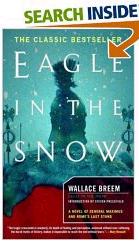
P GAIO MAXIMO FILIO CLAUDII ARELATIS
PRAEFECTUS I COH TUNG LEG XX VAL VIC
DUX MOGUNTIACENSIS COMES GALLIARUM
ANN LVII CCCX ET Q VERONIO PRAEFECTUS
ALAE PETRIAE PRAEFECTUS II COH ASTUR
MAGISTER EQUITUM GERMANIAE SUPER ANN
LVI CECIDIT BELLO RHENO CCCCVII
SATURNINUS AMICUS FECITFrom The Publisher:
 On
the opposite side of the Rhine River, tribal nations are uniting;
hundreds of thousands mass in preparation for the conquest of Gaul,
and from there, a sweep down into Rome itself. Only a wide river
and a wily general keep them in check.
On
the opposite side of the Rhine River, tribal nations are uniting;
hundreds of thousands mass in preparation for the conquest of Gaul,
and from there, a sweep down into Rome itself. Only a wide river
and a wily general keep them in check.
With discipline, deception, persuasion, and surprise, Maximus holds
the line against an increasingly desperate and innumerable foe.
Friends, allies, and even enemies urge Maximus to proclaim himself
emperor. He refuses, bound by an oath of duty, honor, and
sacrifice to Rome, a city he has never seen. But then
circumstance intervenes. Now, Maximus will accept the purple
robe of emperor, if his scrappy legion can deliver this last crucial
victory against insurmountable odds. The very fate of Rome hangs
in the balance.
Combining the brilliantly realized battle action of Gates of Fire
[by Stephen Pressfield] and
the masterful characterization of Mary Renault's The Last of the
Wine, Eagle in the Snow is nothing less than the novel of the fall
of the Roman empire."Wallace Breem's
The Legate's Daughter
Profile of Wallace
Breem by Alan Fisk

 Wallace
Breem was born in 1926, and went to Westminster School. As a boy, he
developed a desire to serve in the Indian Army, a desire which was
kindled by the books of Rudyard Kipling and by seeing Gary Cooper in The
Lives of a Bengal Lancer. The 1930s Saturday cinema matinées have
much to answer for.
Wallace
Breem was born in 1926, and went to Westminster School. As a boy, he
developed a desire to serve in the Indian Army, a desire which was
kindled by the books of Rudyard Kipling and by seeing Gary Cooper in The
Lives of a Bengal Lancer. The 1930s Saturday cinema matinées have
much to answer for.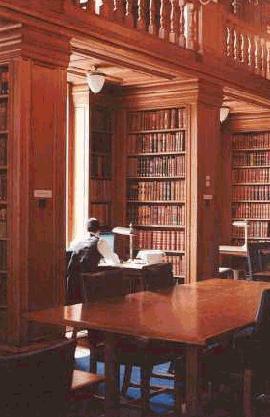

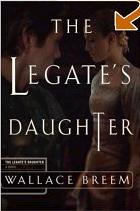 The
character of the ex-soldier Curtius Rufus, and the louche Rome in
which he lives, oddly prefigure the “Falco” novels of Lindsey
Davis.
The
character of the ex-soldier Curtius Rufus, and the louche Rome in
which he lives, oddly prefigure the “Falco” novels of Lindsey
Davis. Major
Sandeman of the Khaisora Scouts, a regiment recruited from Pathans and
other tribes of Waziristan on the Northwest Frontier, is in acting
command of the fort of Khaisora when he receives a signal that a large
force has crossed over from Afghanistan and is attacking the scattered
outposts.
Major
Sandeman of the Khaisora Scouts, a regiment recruited from Pathans and
other tribes of Waziristan on the Northwest Frontier, is in acting
command of the fort of Khaisora when he receives a signal that a large
force has crossed over from Afghanistan and is attacking the scattered
outposts.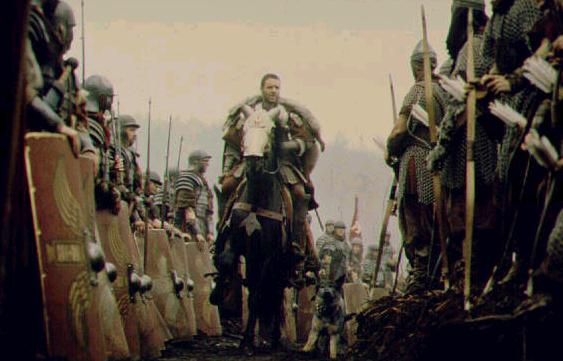
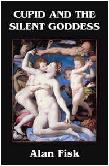 Cupid
and the Silent Goddess
Cupid
and the Silent Goddess